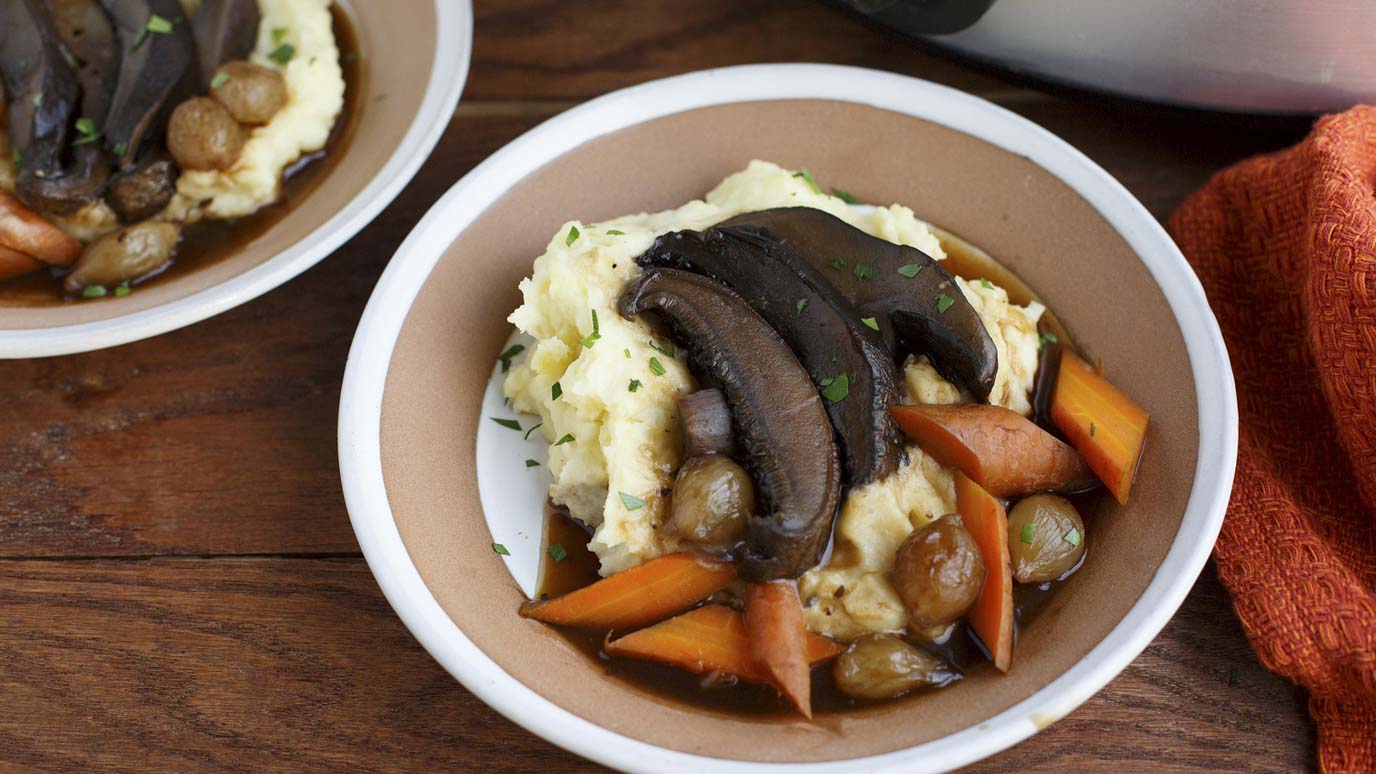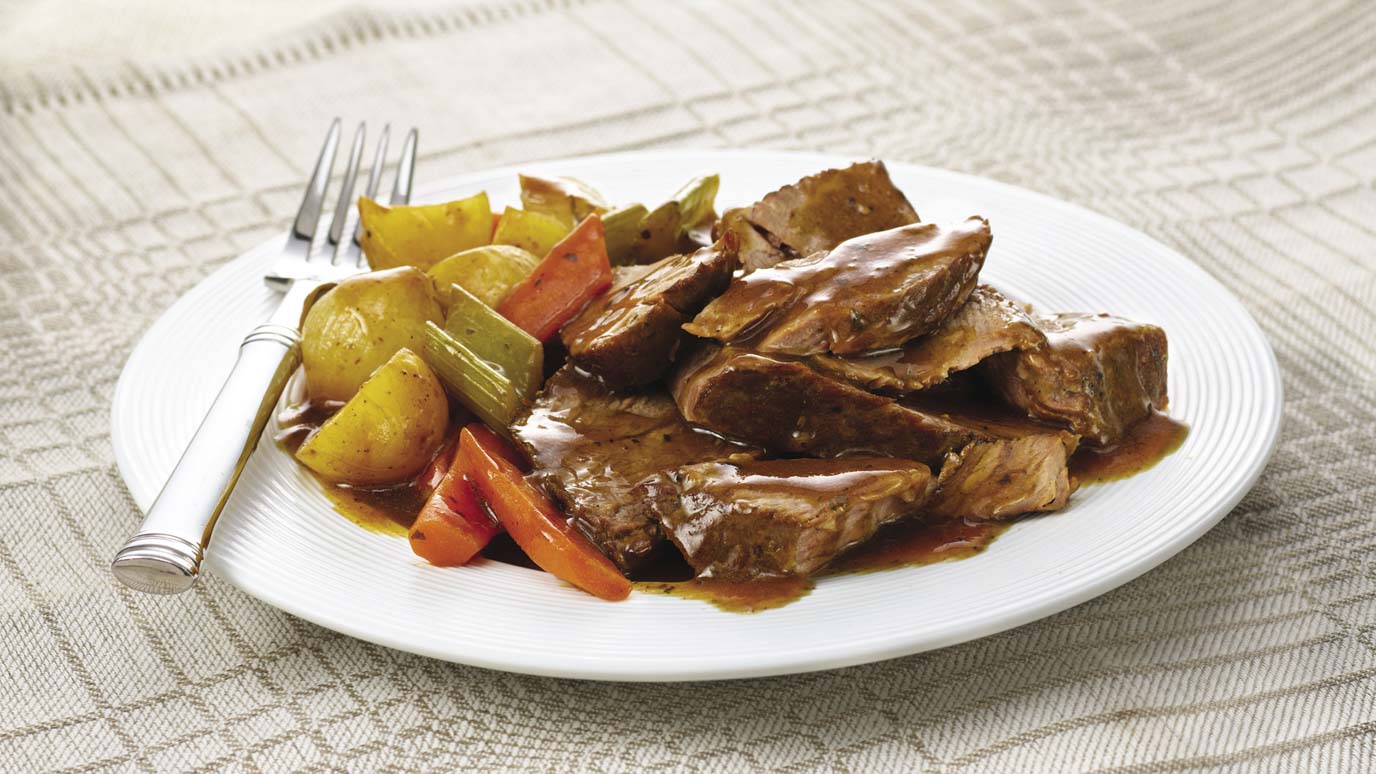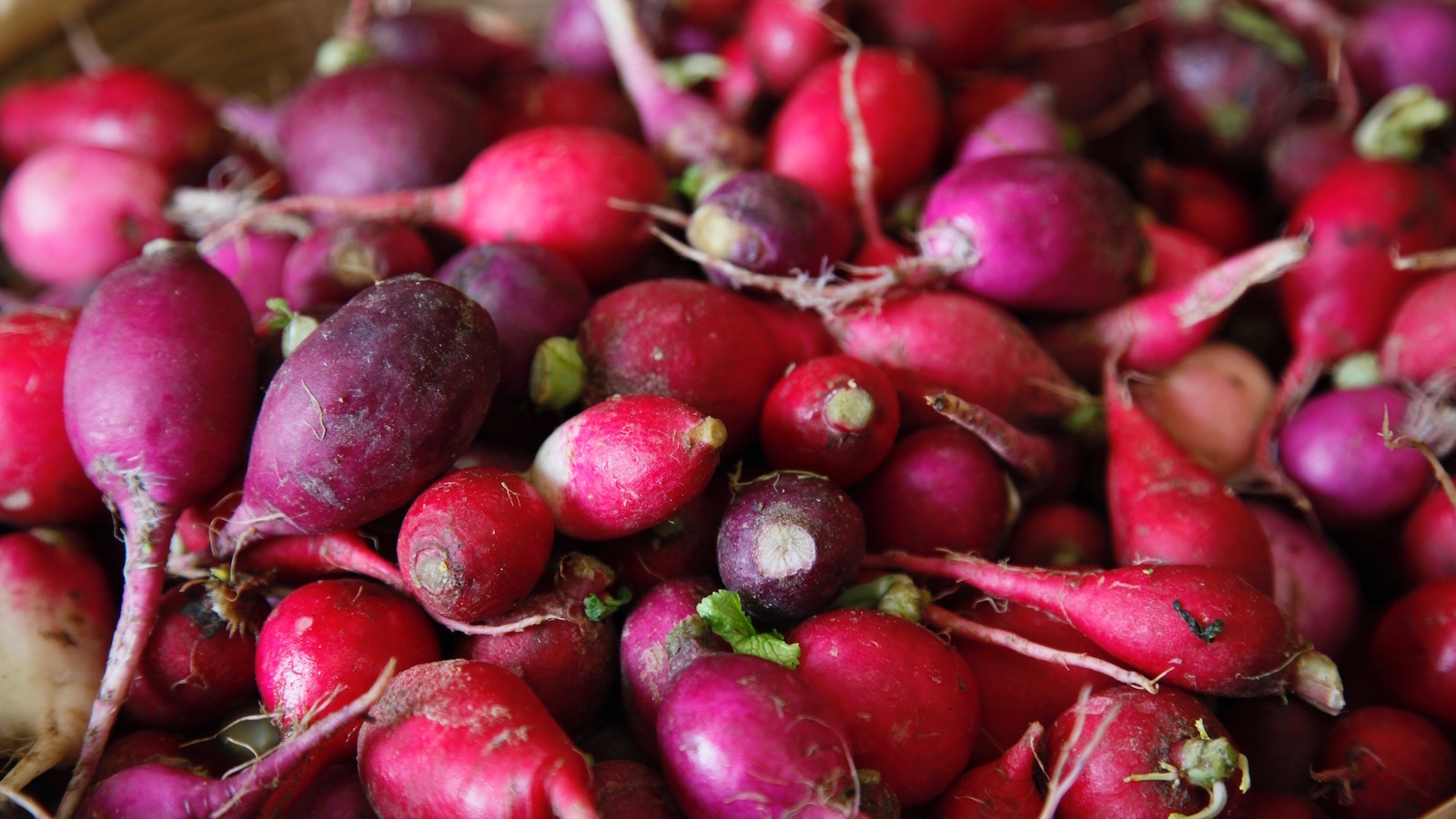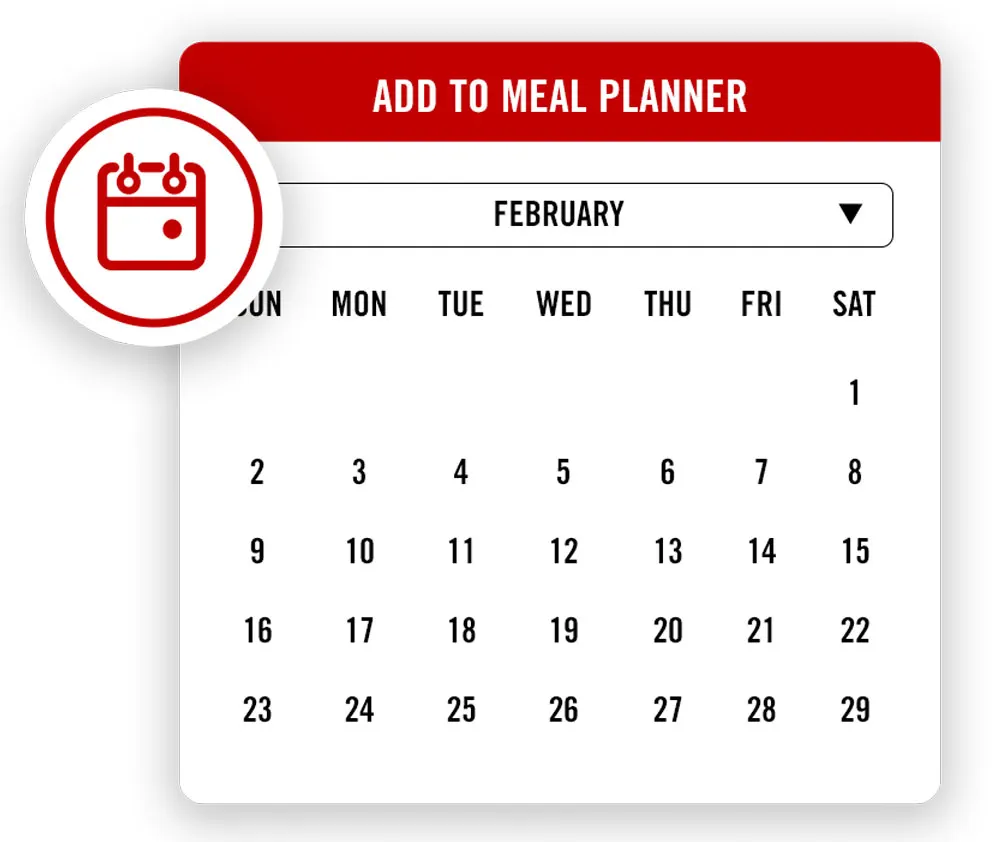These Cooking Tips Will Save Your Slow Cooker Vegetables
While everyone wants slow cooked meat to be fall-apart tender, that isn't the case for slow cooker recipes with vegetables. Cook them for too long, and you'll get a mushy mess. Fear not; here's how to slow cook veggies to perfection without a pulpy potato or a soggy shallot in sight.
Choose the right vegetables for slow cooking
Firmer vegetables such as bell peppers, green beans, and cauliflower fare best in the slow cooker. Root vegetables like carrots, potatoes, parsnips, and turnips are even better, emerging tender but still holding their shape and texture.
Combining some of these vegetable ingredients into a single slow cooker will create a vegetable medley to die for. Just check out the succulent mushroom, pearl onion, and carrot combination in our Slow Cooker Vegan Portobello Pot Roast dish.
Properly prepare vegetables for slow cooker
Even the firmest vegetables need some thoughtful preparation for slow cooker success. Cut them into even-sized pieces to ensure consistent cooking, but keep those pieces large enough to stop them breaking down.
If you must use softer vegetables, blanch them just before adding them into your dish. This involves fast-boiling for a couple of minutes, followed by quick cooling in iced water. It's a magic trick for keeping vegetables firm and vibrant, deactivating enzymes that otherwise cause them to lose colour and flavour.
Slow cooker vegetable cooking techniques
With your vegetables prepared, it's time to cook. There are several ways to ensure perfect firmness when slow cooking with vegetables.
Manage cooking time
Vegetables of different firmness will cook in different times. Add your firmest fayre (typically root vegetables) first and your softer ones later. In some cases, like this Slow Cooker Scalloped Potatoes recipe, a single vegetable will be all you need - although these potatoes are coated with cheese and our Gluten-Free Chicken Gravy Mix in a skillet before they go into the slow cooker.
Alternatively, layer your veggies. Root vegetables at the bottom will often cook more vigorously, sitting just atop the heating element that is typically in the base, while those at the top will take longer to warm. Then come the proteins, (meat, fish, or pulses). Finally come the medium-firm vegetables.
Whether you add most of your vegetables at once or in stages, avoid adding any very soft vegetables until the last 30-60 minutes. They're so much more delicate that you'll want to ensure they don't overcook.
Leave enough time to cook your dish on low rather than medium or high. This cooks veggies more gently. If you are cooking on a higher temperature, monitor their firmness throughout the cook. If they're softening too quickly, turn the heat to low.
Manage moisture
Managing the amount of moisture in your slow cooker is key. Too much will make your vegetables steam, and a few hours of that is a perfect recipe for mush - especially given that vegetables release moisture of their own when they cook. So, use just enough liquid to coat the ingredients and cover the bottom of the slow cooker. Sauces can't be too liquid either. Thicken them using tomato paste, flour, or cornstarch.
Seasoning and Flavouring Slow Cooked Vegetables
So much for texture; what about taste? When slow cooking with vegetables, a little extra flavour can go a long way. Consider these techniques to bump up the yum factor.
Add dried spices early in the cook, like the Ground Cinnamon and Ground Ginger in this sweet, spicy Slow Cooker Cinnamon Sugar Glazed Carrots recipe. Robust fresh herbs like rosemary, thyme, or bay leaves can also be added at the beginning of your slow cooker recipe, as can garlic, onions, or leeks. All these ingredients can stand up to the slow heat, releasing their flavours to create a rich, tasty base. Wait until the final 15 minutes to add more delicate fresh herbs like parsley or cilantro.
Seasonings designed for slow cooking can also create a delectable dish, like the Slow Cookers Pot Roast in this Savoury Slow Cooked Pot Roast recipe.
Slow cooker recipes with vegetables can bring some hearty seasonal joy to your table. Done properly, they'll be fresh and flavourful, with a firm enough texture to ensure that you enjoy every bite.
More Slow Cooker Recipes
If you're still craving more slow cooker recipes, we don't blame you. Here are some to satisfy your appetite.










